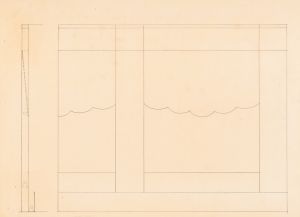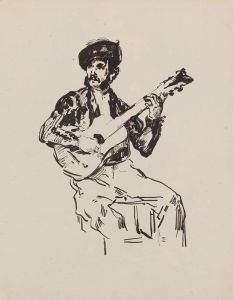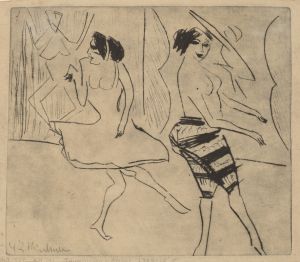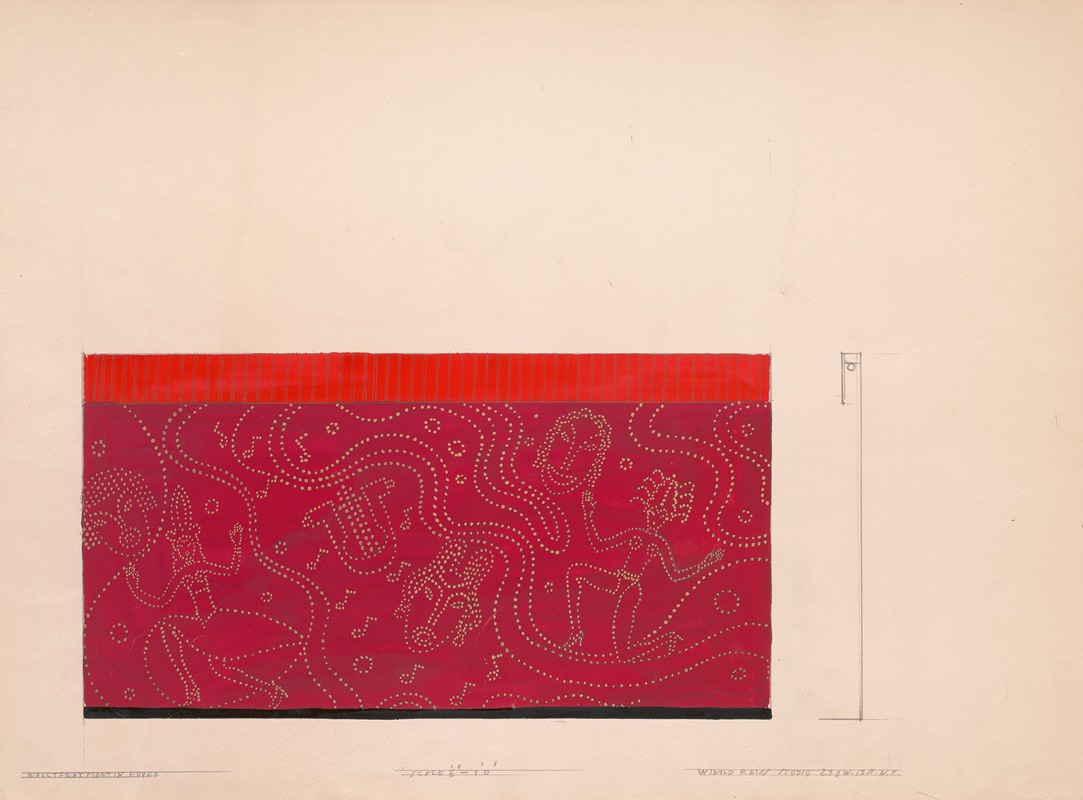
Design for unidentified restaurant, possibly Dunhall’s Restaurant, New York, NY.] [Mural of masks and dancing figures
A hand-painted replica of Winold Reiss’s masterpiece Design for unidentified restaurant, possibly Dunhall’s Restaurant, New York, NY.] [Mural of masks and dancing figures, meticulously crafted by professional artists to capture the true essence of the original. Each piece is created with museum-quality canvas and rare mineral pigments, carefully painted by experienced artists with delicate brushstrokes and rich, layered colors to perfectly recreate the texture of the original artwork. Unlike machine-printed reproductions, this hand-painted version brings the painting to life, infused with the artist’s emotions and skill in every stroke. Whether for personal collection or home decoration, it instantly elevates the artistic atmosphere of any space.
Winold Reiss was a German-American artist known for his work in portraiture and design, particularly in the early to mid-20th century. Born in Karlsruhe, Germany, in 1886, Reiss immigrated to the United States in 1913, where he became a prominent figure in the American art scene. His work often reflected a blend of European artistic techniques and American themes, making him a unique contributor to the art world of his time.
Reiss is perhaps best known for his murals and interior design work, which often featured vibrant colors and dynamic compositions. His artistic style was heavily influenced by his European training, particularly the Jugendstil movement, which emphasized decorative arts and design. Reiss's work in America frequently incorporated elements of Native American culture, African American life, and other diverse cultural motifs, reflecting his interest in and respect for different cultural traditions.
One of Reiss's notable projects involved creating murals for various public and private spaces. Although specific details about the mural titled "Design for unidentified restaurant, possibly Dunhall’s Restaurant, New York, NY" are scarce, it is consistent with Reiss's known body of work that he would have been commissioned to create a mural for a restaurant setting. His murals often depicted lively scenes with figures in motion, capturing the essence of the social and cultural atmosphere of the time.
The mural in question, described as featuring masks and dancing figures, aligns with Reiss's penchant for incorporating theatrical and performative elements into his art. Masks, in particular, are a recurring motif in his work, symbolizing both the concealment and revelation of identity, a theme that resonates with the diverse cultural tapestry of early 20th-century America. Dancing figures, meanwhile, suggest a celebration of life and movement, common themes in Reiss's murals that aimed to enliven the spaces they inhabited.
Reiss's contribution to the art world extends beyond his murals. He was also a prolific portrait artist, capturing the likenesses of many notable figures of his time, including African American leaders and Native American individuals. His portraits are celebrated for their vivid realism and sensitivity to the subject's character and cultural background.
Throughout his career, Reiss maintained a commitment to exploring and celebrating cultural diversity through his art. His work remains a testament to his belief in the power of art to bridge cultural divides and to celebrate the richness of human experience. Winold Reiss passed away in 1953, but his legacy continues to influence artists and designers who seek to blend cultural motifs with contemporary design.
In summary, while specific information about the mural for Dunhall’s Restaurant is limited, Winold Reiss's broader body of work provides context for understanding the themes and styles he likely employed in this piece. His murals, characterized by vibrant colors, dynamic compositions, and cultural motifs, reflect his unique artistic vision and his contribution to American art and design.





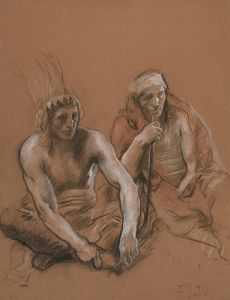
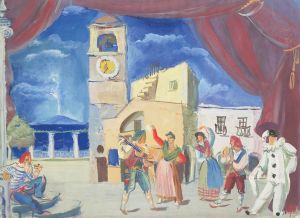
![Design for mural inside of theater.] [Interior wall mural study](/imgs/249291/s/winold-reiss-design-for-mural-inside-of-theater-interior-wall-mural-study-ef62eeaf.jpg)
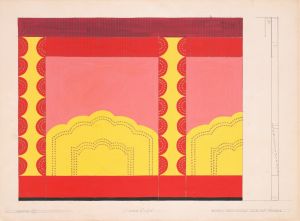
![Designs for the Puck Theater , New York, NY.] [Exterior perspective study.](/imgs/249326/s/winold-reiss-designs-for-the-puck-theater-new-york-ny-exterior-perspective-study-8f47d02.jpg)
![Graphic design drawings for Barricini Candy packages.] [3-D Study for 6 rectangular boxes](/imgs/249345/s/winold-reiss-graphic-design-drawings-for-barricini-candy-packages-3d-study-for-6-rectangular-boxes-2f81667e.jpg)
![Graphic design for cover of Survey Graphic Magazine; ‘The British and Ourselves’.] [Drawing with British Parliament and US Capitol Building](/imgs/249351/s/winold-reiss-graphic-design-for-cover-of-survey-graphic-magazine-the-british-and-ourselves-drawing-with-british-parliament-and-us-capitol-building-a38e50da.jpg)

![Miscellaneous small sketches for inlaid table tops.] [Design with lined grid motif](/imgs/249437/s/winold-reiss-miscellaneous-small-sketches-for-inlaid-table-tops-design-with-lined-grid-motif-d3964044.jpg)
![Suggested treatments of Auditorium for Theatre and Concert Hall, New York World’s Fair 1939.] [Sketch for Scheme A](/imgs/249447/s/winold-reiss-suggested-treatments-of-auditorium-for-theatre-and-concert-hall-new-york-worlds-fair-1939-sketch-for-scheme-a-32d2e6d7.jpg)
